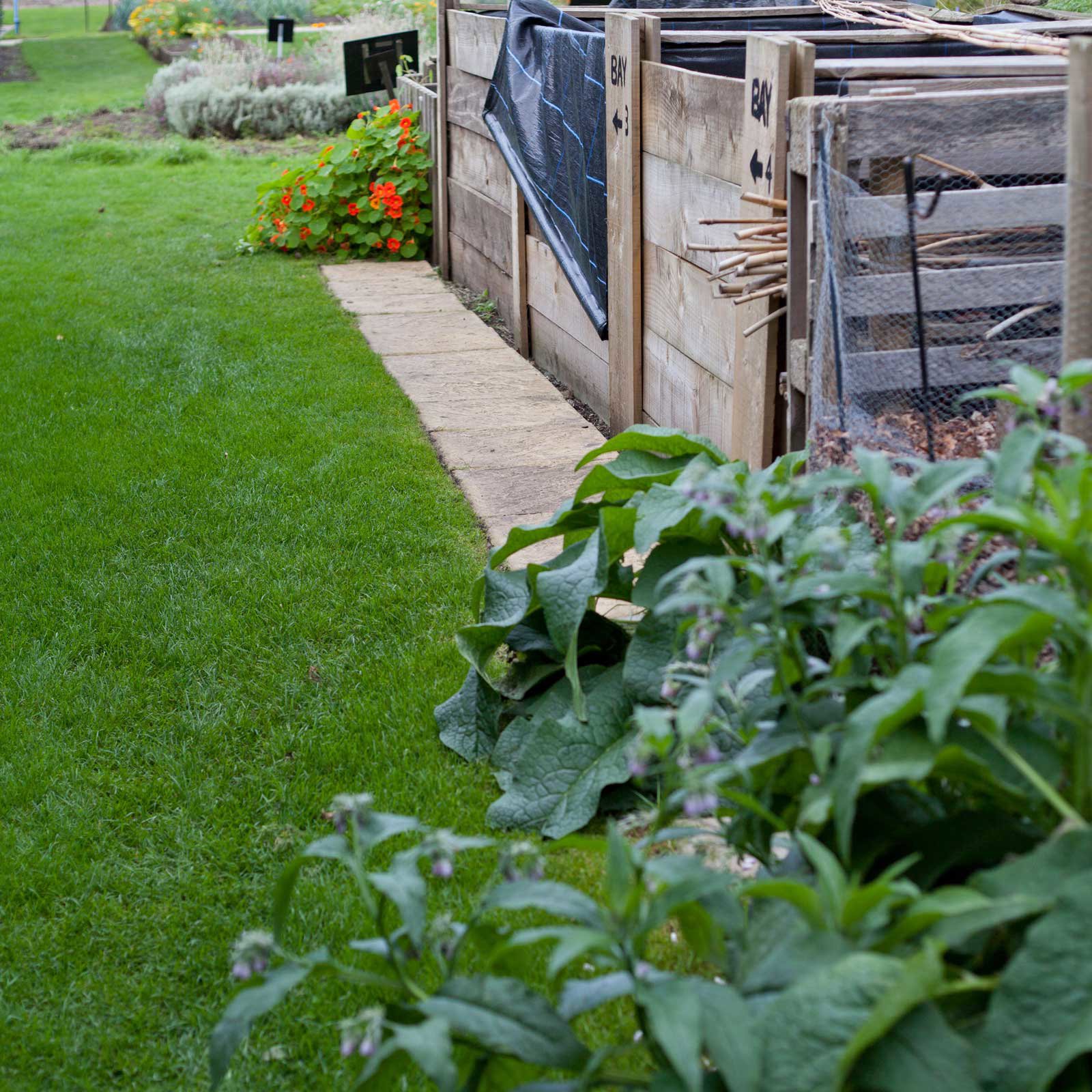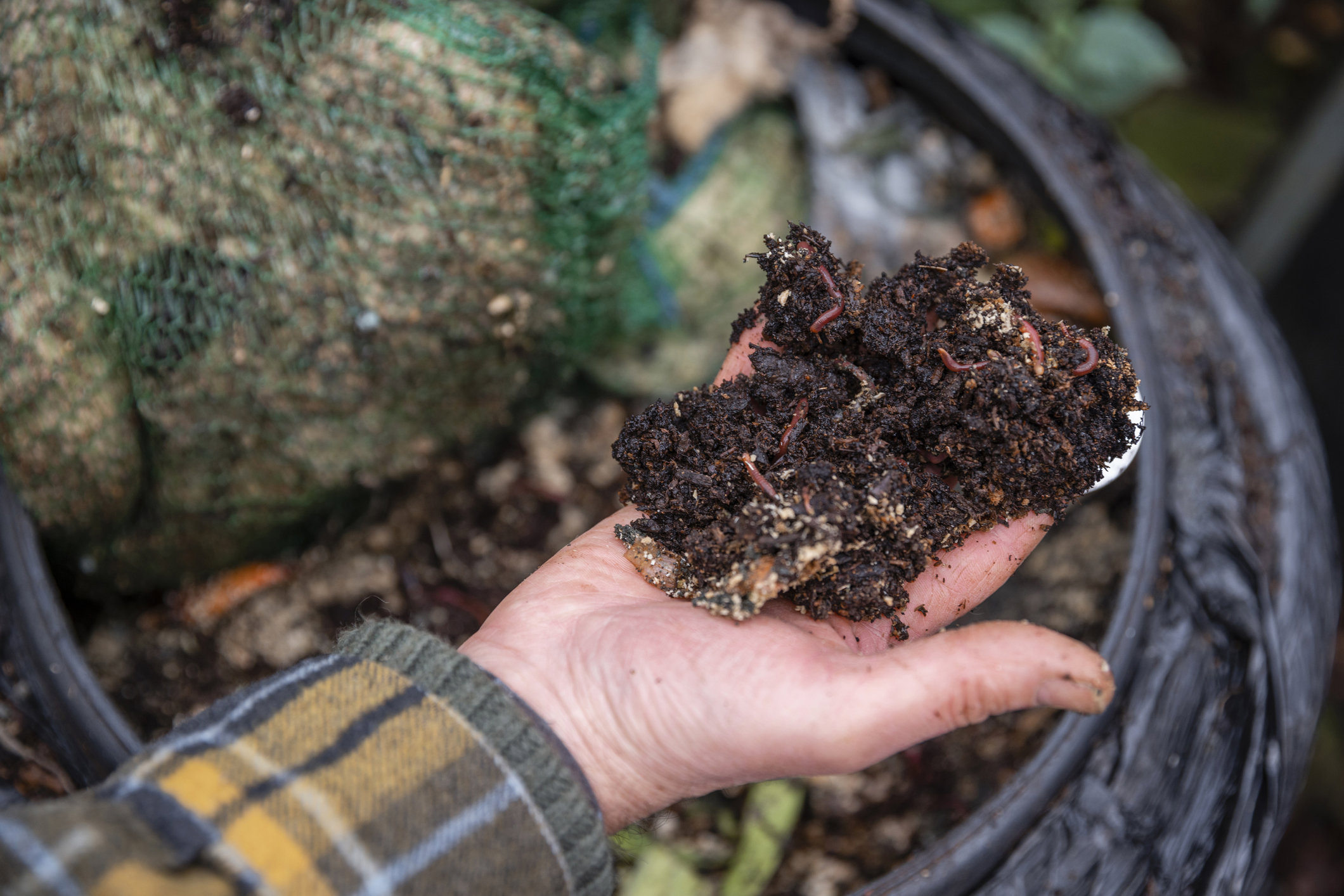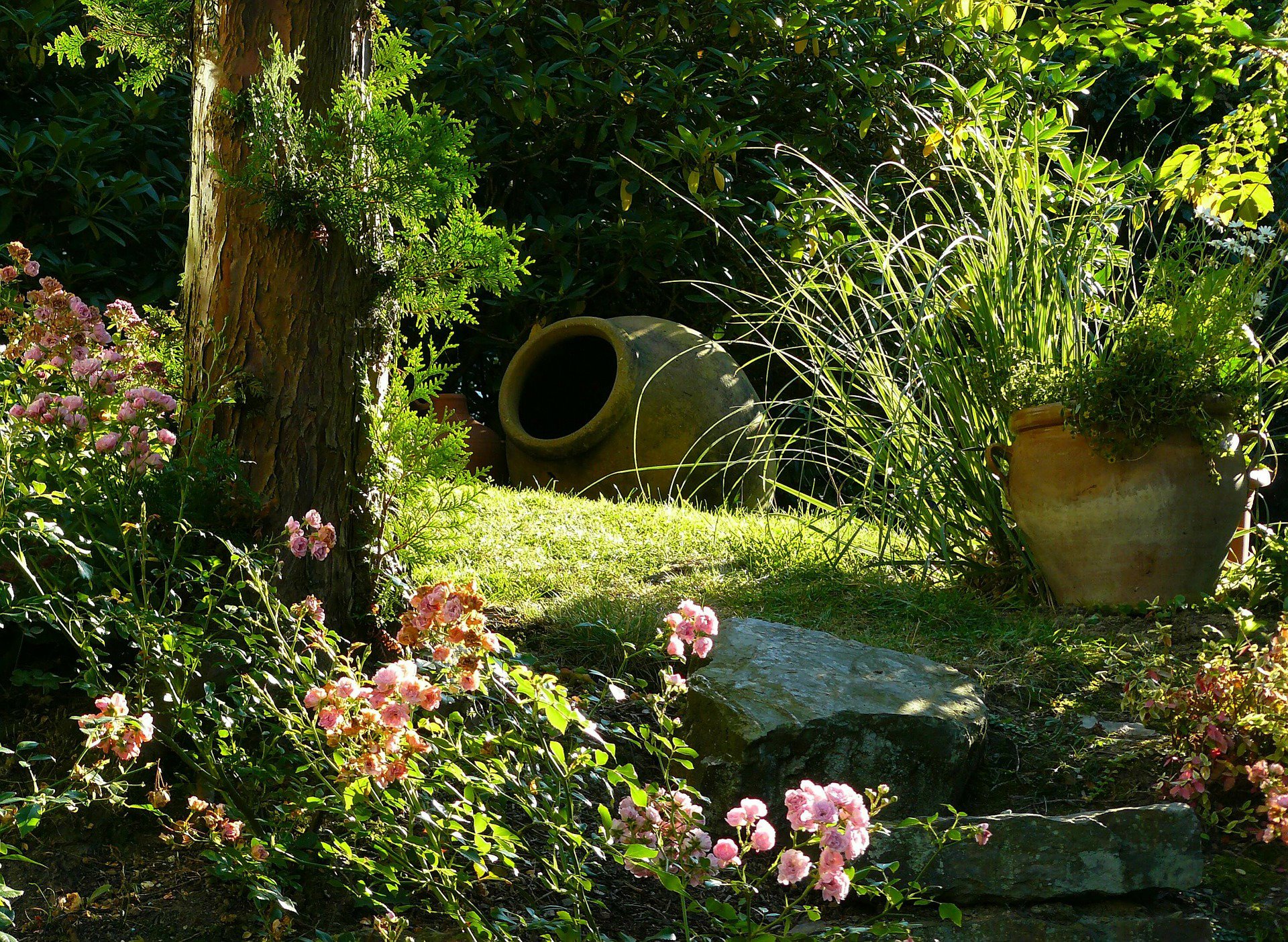
Make Your Own Garden Mulch
Nothing boosts soil and plant health more than rich compost. We’re looking at the pros and cons of making your own garden mulch.
Home composting has traditionally been an efficient way to recycle waste. Professional gardeners relish the idea of using garden mulch that has been made on site. It’s cheap to produce, doesn’t come wrapped in plastic, and there’s no waiting around for deliveries. Plus, composting helps to relieve the burden on council recycling centres. So how do you make your own compost? Here are a few pointers.
- Decide on the size and type of container you’ll need.
- Find a suitable place for your compost bin.
- Add green and brown household waste to the heap.
- Turn your compost heap regularly to keep those microbes active.
- Add activators if progress is slow.
- Use your home made compost as garden mulch or mix with soil and grit to make potting compost.
What kind of compost bin do you need?
There are a myriad of different compost containers on the market, almost too many to choose from. But which one is right for you?
Think about the size of your garden and the quantity of green and brown waste your household generates. You can compost vegetable peelings, most garden weeds, fallen leaves, cardboard, coffee grounds, straw or wood chip pet bedding, and even shredded paper. Compost takes up to a year to rot down properly, so try to estimate how much room you’ll need for 12 months worth of waste.
Most professional gardeners will recommend having a two or three bay composting area. This can be created using old pallets. It doesn’t have to be expensive. Having two bays makes turning your compost heap much easier and a third bay allows you to have one heap that is ‘finishing’ and one that you are currently adding to. It’s an old-fashioned but very effective method.
You may prefer to investigate some of the composting bins on the market. Before you invest, think about how you will turn the heap and remove the finished garden mulch. Some compost bins are easy on the eye but somewhat impractical.
If your household only generates a moderate amount of green waste, you may wish to consider a wormery instead of a compost heap. These are usually neat boxes with a lid and a tap. Specialist worms live inside the wormery and convert your peelings into two substances. Garden mulch, and worm tea - a rich dark liquid that you can dilute and feed to your plants.

Where to put your composting area
The art of composting is keeping the heap warm - but not too warm, and damp - but not waterlogged. Your composting area therefore needs to be in a relatively sunny spot in the garden and also sheltered from drying winds.
Wormeries aside, for they are self-contained units, a compost bin needs to stand on bare soil so that worms and microbes can access all the goodies you are adding to it. The area needs to be level too - nobody needs an unstable compost heap!
Done properly, compost should never be smelly or infested with flies but nevertheless, you probably won’t want it right next to your seating area. Likewise, creating garden mulch is not a pretty process. Try to screen this utility area from the relaxation and entertaining areas of your garden.
If your compost heap is too far from your kitchen door, you probably won’t feel like putting your veggie peelings on it if the weather is foul. Make sure it’s positioned somewhere convenient and have a robust path leading to the heap. Remember too, you will need to get your wheelbarrow close to the compost heap when it’s time to distribute your garden mulch.
If you are rearranging your garden to make room for composting and/or growing your own food, it’s worth consulting a MAPL garden designer. They can help you create a practical and attractive space that will suit your lifestyle.
What Makes Good Garden Mulch?
Making garden mulch at home involves adding a rich mix of ‘brown’ and ‘green’ ingredients to your compost bin. It takes a while to learn how to get the balance right, but mistakes are easily rectified.
“Green” compost ingredients are ones with a relatively high water content. Vegetable peelings, cut flowers that have passed their best, coffee grounds, plastic-free teabags, weeds and lawn clippings.
“Brown” compost ingredients are relatively dry plant based materials. Straw pet bedding, shredded paper, chopped woody stems and fallen leaves.
NEVER add meat, dairy or cooked ingredients to you compost heap. You’ll make awful smells and bring every rodent and fly in the neighbourhood rushing to your garden.
The art of compost making is to balance the proportions of brown and green ingredients. Too much green and the mix will be too wet. An excess of brown will starve the composting microbes of moisture and slow down the process.
It’s also important to keep the heap well aerated. Ingredients such as grass clippings and animal bedding tend to clump together. This leads to anaerobic decomposition, which is a the technical term for making stinky slime. Grass clippings are great for composting, just be sure to mix them with plenty of ‘brown’ materials such as shredded card to aerate the heap and absorb excess moisture.

Can I Speed Up The Composting Process?
Sometimes, it seems as though it’s taking ages to turn your green and brown waste into compost. There are all sorts of reasons for this. Composting will slow in winter time when the temperatures drop. But also a shortfall in the number of bacteria and fungi in the heap can make for a slower process.
Efficient composting happens when the temperature inside the heap is between 65 and 71 decrees Celsius and the moisture content is 40 - 60%
Bacteria and fungi work alongside worms and mini beasts to break the ingredients of your compost heap down into a fine tilth and to release the nutrients locked up within them. It therefore follows that if you can stimulate those microbes to work a bit harder, your composting process will speed up.
You can buy proprietary compost activators from the garden centre. But for a more natural approach, add some fresh cow or horse manure to the heap. At Kew Gardens, they regularly add muck from the stables of the Household Cavalry to their compost. You can’t beat a bit of posh poo!
Another old gardener’s trick is to pee on the heap. However, tiddling in the garden may not be socially acceptable in this day and age. In the days before indoor plumbing, it was quite common to empty chamber pots onto the compost heap. Apparently that contributed to making some rather lovely garden mulch.
What does turning the compost mean?
Some composting systems, such as wormeries and closed bins don’t require you to turn the compost. However, if you can do it, turning the compost heap helps to ensure that EVERYTHING gets broken down into mulch. It will also speed up the process by distributing worms and microbes more evenly.
Turning a compost heap is easy-peasy if you have two bays. All you need to do is fork the contents of the pile from one bay into the next. That way, ingredients on the top of the pile will end up and the bottom and everything in the middle will end up at the edge. It’s a great job for a miserable day. You’ll definitely burn a lot of calories and it’s cheaper than a cardio session at the gym!
Is Leaf Mulch The Same As Compost?
Leaf mulch is one of the best garden mulches you can make. The process is similar to composting, except the only ingredients to the heap are fallen leaves. With the absence of green materials, it does take time to make leaf mulch. You can speed up the process though by chopping the leaves before adding them to the pile.

Help To Create A Composting Area
If your household generates a lot of green and brown waste, a composting area will be a real asset. But you don’t want it to become an eyesore or a chore.
Asking a professional garden designer and/or a landscaper to help you design a utility area with convenient compost bins that are screened from view is undoubtedly an excellent investment.
